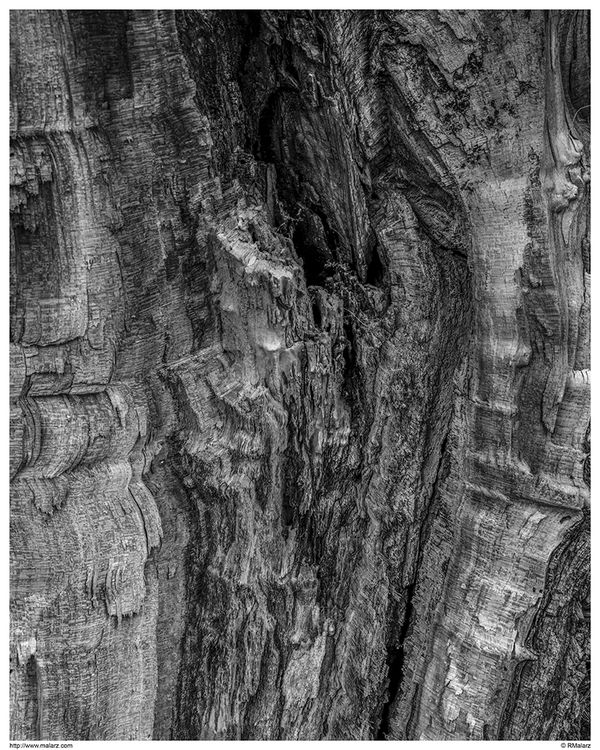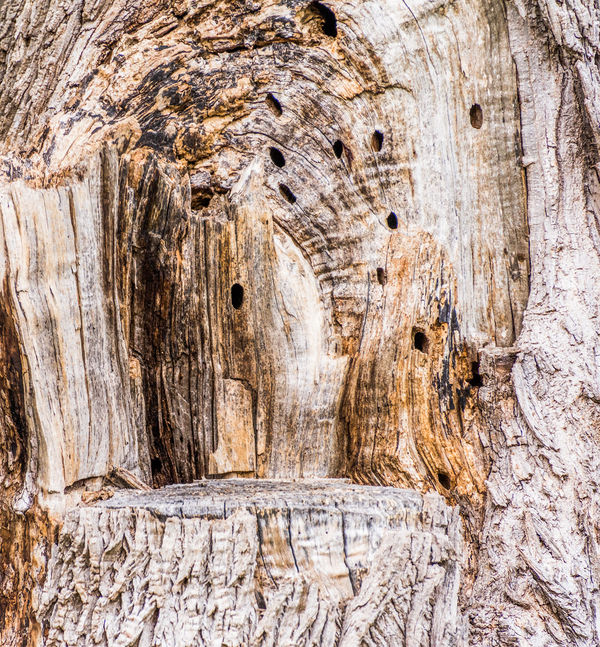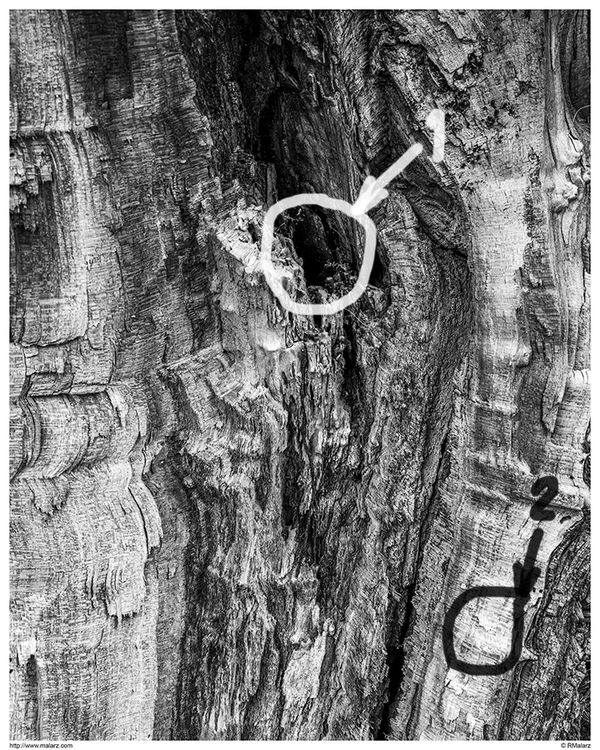Broken Pine Tree
Dec 25, 2015 23:18:46 #
Dec 25, 2015 23:36:06 #
Frank2013
Loc: San Antonio, TX. & Milwaukee, WI.
rmalarz wrote:
Love it Bob. Hope you don't mind. Broken Arizona Ash......sorta because of your location.Broken Pine Tree
Dec 25, 2015 23:54:48 #
Magnificent technique as always Bob. Perfect tonal range. You really owe it to us mortals to let us know how you do it.
Dec 26, 2015 00:09:24 #
Frank2013 wrote:
Love it Bob. Hope you don't mind. Broken Arizona Ash......sorta because of your location.
Thanks, Frank. Like mine, the texture is what I find attractive. Additionally, no two are alike.
--Bob
Dec 26, 2015 00:14:05 #
Frank2013
Loc: San Antonio, TX. & Milwaukee, WI.
rmalarz wrote:
Thanks, Frank. Like mine, the texture is what I find attractive. Additionally, no two are alike.
--Bob
--Bob
You just do such an amazing job with tone Bob.
Dec 26, 2015 00:47:19 #
Billyspad wrote:
Magnificent technique as always Bob. Perfect tonal range. You really owe it to us mortals to let us know how you do it.
Thank you very much, Billy. I appreciate the compliment.
Well, you asked for it. So, here goes. Some time ago I did a lot of testing which involved exposing 7 sheets of 4x5 film. These 7 sheets were placed in contact with a calibrated 21 step wedge test film. The negatives were individually developed in a 1:7 dilution of Ilfotec-DDX developer at 20C. The development times were 4 minutes, 5'30", 8', 11', 16', 22' and 32'.
After the film was developed, fixed, washed, and dried, the 21 steps of density were measured using a Sargent-Welch Densicron Densitometer. Those reading were input into the spreadsheet.
In turn, the curves generated by the spreadsheet data were input into a program, which resides in my iPhone. That program is an exposure/development program initially developed by Phil Davis.
Now, for the actual photograph. I've attached a copy of the photo with areas marked where I took meter readings. The meter used was a Sekonic L-758DR. The ISO was set to 100. The metering mode was spot metering. The area marked 1 was measured at 8.5EV. I placed that in Zone I.
I then read the highlights, marked 2. That measured 10.6EV and I indicated that I wanted that to be Zone VIII. I used a Schneider-Krueznach 210mm Symmar S, whose profile is also included in the exposure program.
The program indicated that I could use an exposure of 1/2sec at f/22. The development time called for was 22'27". That produced a negative with the appropriate densities to render the areas marked in the Zones I wished them to be.
Afterwards, I scanned the negative into Photoshop and proceeded to simply vignette the edges just a bit and produce the image you see.
--Bob
Dec 26, 2015 03:24:00 #
Your explanation Bob was much appreciated. I have no knowledge of film but understand fully that your wonderful work comes because of attention to detail.
I sincerely hope more of our members read this tutorial not because they use film but in the hope that the standard of posts improves. Some of the posts over the past few weeks have been simply awful and sub standard with little effort put into them. Some of course have been excellent but crap often just leads to more crap as Im sure you are aware.
Thanks once again my man.
I sincerely hope more of our members read this tutorial not because they use film but in the hope that the standard of posts improves. Some of the posts over the past few weeks have been simply awful and sub standard with little effort put into them. Some of course have been excellent but crap often just leads to more crap as Im sure you are aware.
Thanks once again my man.
Dec 26, 2015 11:18:57 #
jim hill
Loc: Springfield, IL
rmalarz wrote:
Thank you very much, Billy. I appreciate the compl... (show quote)
Realizing that I am totally unfamiliar with all the things available in photography and have been since my first pictures with a calumet 4x5 in 1971, it's difficult for me to understand why all these things are necessary to the production of a full tonal range negative. I started with a Ranger 9. That didn't last long. I finally realized that reading light was as simple as Brett Weston put it: "If you can't see the light then you should choose a different form of expression than photography...."
One particularly frustrating day I was trying to make photographs on Pebble Beach, Pt. Lobos, and as soon as I made readings the light would change and the meter would go nuts. I just couldn't keep up. As a result the Ranger 9 was tossed into the surf. From that time on I never again touched a meter. Know what? I missed just as many "right on" exposures as guys who used meters - but I was free to see.
There are only two things to master in correct exposure: Seeing the light and appropriate compensation. As long as all the information is in the negative anything can be done with it in the dark room in the hands of a capable printer.
I am not bad-mouthing the marvelous things that can be done with equipment. What is true is that there is another intuitive way. I choose the later - probably because of stupidity. However, under any lighting situation I can give you the correct exposure by feel of the light, knowing the ASA of film and then the proper plus or minus exposure and development.
With digital it's an entirely different technique. I let the camera do the thinking for me with the stipulation that it records a fully exposed image.
That's what the little white box in the upper right is for.
Dec 26, 2015 14:09:36 #
Billyspad wrote:
Your explanation Bob was much appreciated. I have ... (show quote)
Billy, you're quite welcome.
--Bob
Dec 26, 2015 14:20:03 #
jim hill wrote:
Realizing that I am totally unfamiliar with all th... (show quote)
Sorry to hear that. I wish you'd have thrown that Ranger 9 at me instead. I have a couple and enjoy using them.
As for the other technicalities, I find that utilizing the full range of the medium, whether film or digital, make for an easier time in producing optimum prints. This holds for almost any environment.
I prefer to know the optimum exposure settings to produce the optimum "latent" image from which I can produce the optimum final result. Regardless of circumstances, but when circumstances permit.
Ultimately, it comes down to knowing the equipment one is using. So, if "seeing the light" works for you, that's great. I not only see it, but also measure it and respond accordingly.
--Bob
Dec 26, 2015 14:49:00 #
jim hill
Loc: Springfield, IL
rmalarz wrote:
Sorry to hear that. I wish you'd have thrown that ... (show quote)
Thanks for the reply, Bob.
I have never been an equipment guy. Due to a slow a learning curve, I recon. I had a perfectly nice HP Designjet T120 Inkjet that was driving me nuts on tonal balance along with colour rendition. Sold it for $250 - a real bargain for someone who knew how and what to do. I now rely on a highly trusted pro printer to do all my stuff - including the very large. I am extreemly happy with their work. A little pricey but it's all good. If I'm not satisfied with a result they do it until it's right.
You probably determine from this little blurb that I just ain't a process fellow. If it don't come natural forget it. There are those around who will do it for me and at 83 I am quite happy to let them.
Dec 26, 2015 15:30:35 #
Dec 26, 2015 19:13:46 #
Linda From Maine wrote:
A beautiful study of textures, Bob! Enjoyed it very much.
Thank you very much, Linda.
--Bob
If you want to reply, then register here. Registration is free and your account is created instantly, so you can post right away.





